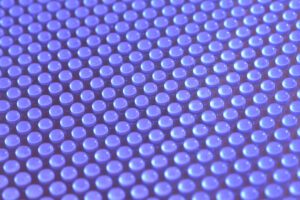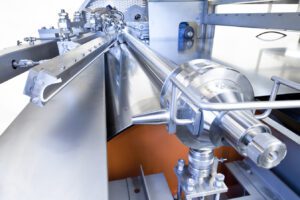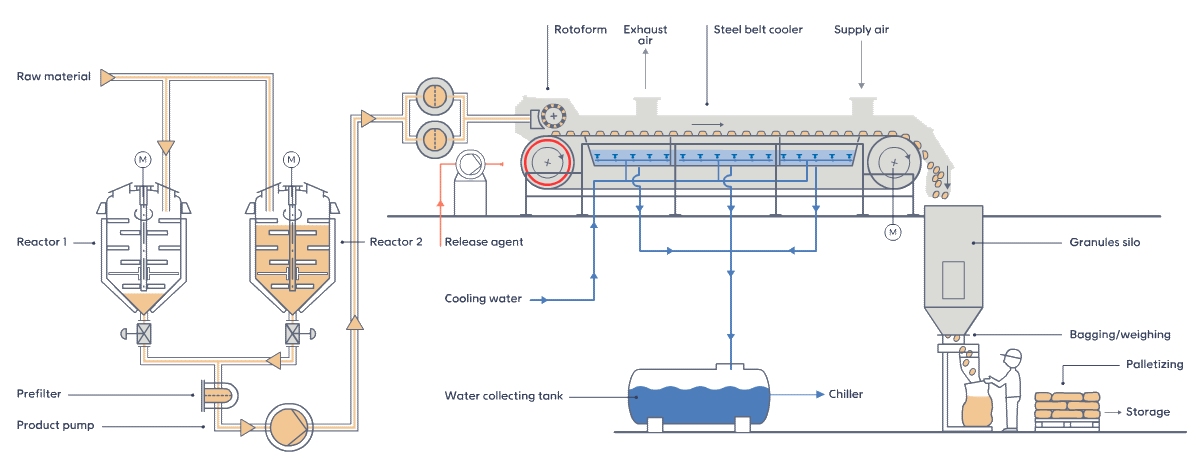Sponsored by IPCO

It is difficult to imagine a chemical product with a broader range of industrial and commercial applications than Hot Melt Adhesives (HMAs). Strong, versatile and easy to use, hot melt adhesives are used across sectors as diverse as construction, automotive, textile manufacturing, furniture and food packaging.
Simply put, a hot melt adhesive is a thermoplastic material that exists in solid form at room temperature but, as the name implies, melts when heated above a certain temperature then creates a powerful bond as it cools down again.
Its widespread use is driven by the benefits it has over water- or solvent-based (i.e. non-melting) adhesives, such as instant bonding; high viscosity (suitable for porous and non-porous materials); reusability (hot melts can be remelted) and high mechanical strength.
HMAs can be broken down into two main categories: thermoplastic, where the bond is physical (created by polymers with strong molecular bonds), and reactive, involving a chemical process. For this article we will focus on the former, specifically EVA (ethyl vinyl acetate) adhesives, the most commonly used type of thermoplastic hot melt.
Like all hot melts, EVA is supplied in a solid form and usually – for applications where it is to be applied as part of a process – packed in sacks or bags ready for remelting on site. As well as being convenient for the end user, this is also highly desirable in terms of storage, distribution and handling as it ensures that the chemical mix remains exactly as intended. Hot melts mainly consist of paraffin wax and resin, blended to a specific recipe. Were this carefully calculated mix to be stored or transported in liquid form – in a heated tank truck for instance – the individual products would begin to separate out into different layers, making it unusable without thorough remixing.
In a solidified form, the chemical formulation of this complex product is maintained. The challenge faced by hot melt manufacturers is which of the two main solidification processes to use to achieve this state.
Underwater pelletizing
This process uses three main components: the pelletizer itself, a cooling water system and dryer.
The material is delivered from an upstream extruder or melt pump to the pelletizer, which consists of a die plate and cutting tool. The melt is extruded through the die plate and cut to form pellets. Water flows through the cutting chamber and the pellets are cooled / solidified as they are conveyed to a centrifugal dryer. Here they are separated from the process water and the dry pellets are discharged. The process water remains in a very compact closed circuit cooling system and is recirculated through a tempering system and back to the cutting chamber.
Steel belt granulation
Here, the molten product is fed by a drop depositor onto a continuously running steel cooling belt. As the droplets travel along the system, heat is transferred from the product to cooling water sprayed against the underside of the steel belt and the droplets solidify into consistently sized pastilles.

There are advantages and disadvantages to both processes and deciding which is right for a particular application will depend on a number of factors including product viscosity and – critically – whether or not the product can be allowed to get wet.
|
Pros |
Cons |
|
|
Underwater pelletizing |
|
|
|
Steel belt granulation |
|
|
Dry pastillation for hot melt adhesives
Until the late 1970s – early 1980s, nearly all HMA products were produced using underwater technology but this changed when IPCO (then Sandvik Process Systems) developed the first steel belt coolers for this application.
The introduction of this technology overcame some of the key drawbacks of underwater production, delivering a dry product, producing it without the need for a cutter and doing so on a quiet, energy efficient system that required far less maintenance. Since then more than 150 IPCO Rotoform systems have been installed for the dry pastillation of HMA products.

While the process has undergone significant development in the 40 plus years since it was first introduced, the basic principles – and resulting advantages – remain the same.
As the Rotoform process uses indirect cooling, the cooling water and product cannot come into contact with one another so there is no risk of cross contamination. As well as eliminating the need for drying, this also means that the water stays clean and can be used over and over again.
It is also a versatile process, easy adjusted to meet different requirements in terms of product, hardness and feed temperature. Rotoform HMA systems are capable of handling viscosities from 1 000–30 000 mPas (“from water to honey”) and producing consistent, hemispherical pastilles in sizes from 2–30 mm
In the case of high viscosity products, IPCO employs a number of technologies to eliminate the risk of threads or ‘angel hair’ developing. These include heating of the Rotoform dropfomer itself, heating of the perforated outer shell and the use of a refeed bar that keeps the outer shell clean.
The application of a release agent at the feed end of the steel belt cooler, together with the use of an oscillating knife at the discharge product end, ensures clean removal.
The resulting is a free flowing product of high bulk density and good packaging properties.
Complete processing solutions based on Rotoform solidification
In a typical system, resin, premelted wax and polymer are blended in a mixing reactor on the level above the solidification plant. While one batch is prepared, the batch that has already been mixed is transferred to the Rotoform unit, a process that enables continuous pastillation.

Since introducing the Rotoform, IPCO’s capabilities in this area have grown to encompass a complete range of upstream and downstream equipment. Systems will vary depending upon customer requirements, but a HMA processing system will usually consist of remelting equipment, a pair of mixing reactors, the Rotoform drop depositor, steel belt cooler and downstream bagging and weighing equipment.